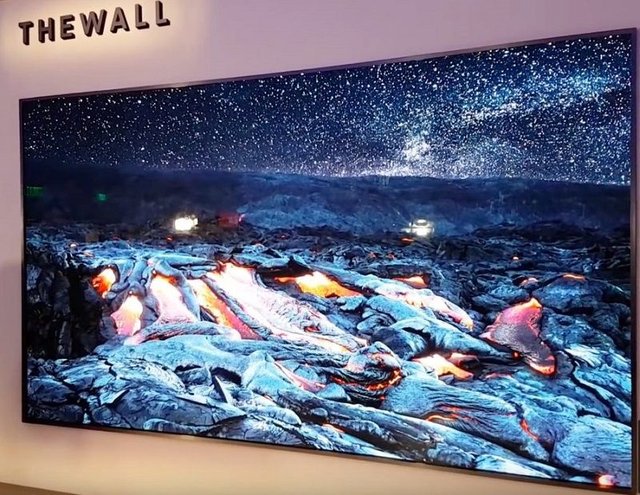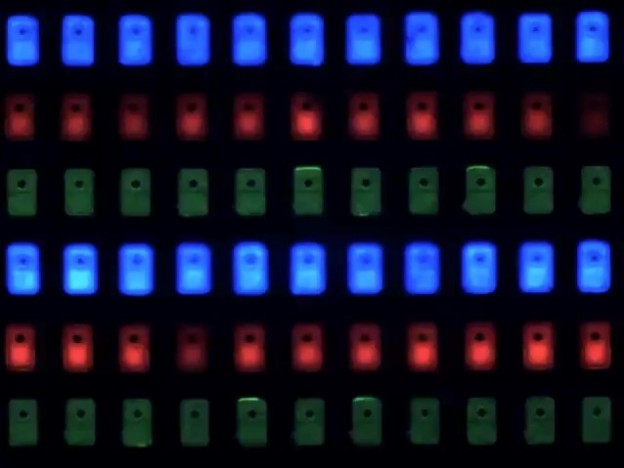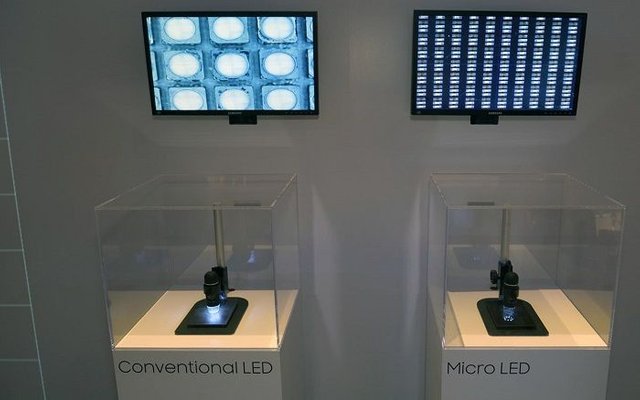An Introduction to mLED; A New Self-Emitting Display Technology
Hello guys,
OLED is the best type of display technology you can get right now, but that might not be for long because there's a new kid on the block called “mLED” or “Micro-LED” that Samsung displayed a prototype at CES earlier this year.
 [1]
[1]They call this “The Wall” and it was basically a 146 inch giant TV which used mLED technology that could be better than OLED in every single way. That's what I’m gonna explicate about in this article today.
What's mLED?
mLED, also known as microLED, micro-LED or µLED, is an emerging flat panel display technology. As the name implies, mLED displays consist of arrays of microscopic LEDs forming the individual pixel elements. When compared to the widespread LCD technology, mLED displays offer better contrast, response times, and energy efficiency.
-Wikipedia
What are the differences between OLED and mLED?
There are actually quite a few differences. Unlike OLED which uses organic LED technology, mLED does not use an organic material, it uses Gallium Nitride (inorganic material). It has a lot of advantages over organic material that OLED uses at the moment.
Before we get into those differences, the first thing you need to know is that mLED for the most part, is very similar to OLED except for that organic Material. It still has individual LED sub pixels for red, green and blue that produces its own light. It doesn't require a backlight like LCD, so that does give you all the advantages of OLED which has a 100% black level and goes all the way down to zero. When the screen wants to display black, it just turns off the LED and it also can get a lot more accurate colors because it can control those sub pixels more accurately at the individual level.

[mLED]
You’ll get all those same advantages but that inorganic material comes in and gives additional advantages over OLED. For example, unlike an organic material that degrades, inorganic material supposedly does not, meaning that where OLED will degrade over time at different rates for each sub pixel, there will be a color shift, mLED supposedly will not do that. You're not going to get pixel degradation, it's going to be consistent color over time. You also apparently have the advantage of not having to worry about burning and ghosting.
Sometimes if you do have the same image on an OLED screen for a while, when you change it, it will retain that image for a little while or at least until you turn it off for a certain amount of time. Apparently, that is not an issue at all from mLED. mLED is also supposedly a lot brighter than OLED, "The Wall” apparently has 2,000 nits, although from what I was reading, it could be as much as 30 times brighter than OLED. That is an obvious huge advantage and also, it apparently uses less energy than LCD at least and potentially less than OLED.
 [3]
[3]It seems like we’re getting all the advantages of OLED and taking away the disadvantages. The only disadvantage of mLED is the price, it is extremely expensive to manufacture and hard to mass produce right now, Although Samsung is saying that their “Wall” mLED will be on sale this year maybe in March, they have not given a price but they're saying it's basically consistent with new technologies as they emerge which basically means it's going to be extremely expensive and I would not be surprised if it was around like $50,000.
One further advantage of mLED Samsung says you can put in a lot more configurations, shapes and sizes than OLED where it's a little bit restrictive, you basically have to put it in squares, but you don’t have to do that with mLED.
You might think that mLED is brand new, it's actually not brand new. It was created and invented back in the year 2000 by some professors at Texas Tech University and Kansas State University. Sony has been using this technology for a little while in prototypes, you might remember back in 2012, they created a new display technology called “Crystal LED” which was basically mLED.
I am interested to know how Samsung plans to potentially mass manufacture these mLED displays in larger formats. From what I've been researching, there are three main ways to manufacture mLED at the moment.
The first method is “Chip bonding”: this is where you put the individual mLEDs on to the display one by one which is time consuming and very expensive. There are also two other methods called “Wafer Bonding” and “Thin Film Transfer.” These two methods, I am definitely not knowledgeable enough to explain, if you really want to look those up, you can check the reference links below this article.
In Conclusion
I think mLED is here to stay and I really hope they come up with ways to make it cheaper because if they can, it will be better than OLED and it'll be the new best TV technology. You guys can let me know what you think down in the comments and if you enjoyed the article, don’t forget to hit that upvote button below.
References: 1 - 2 - 3 - 4
Image sources: 1 - 2 - 3


GIF made by @foundation

This is a test comment, notify @kryzsec on discord if there are any errors please.
Being A SteemStem Member
If it's tagged at 50k,it's gonna be TV for the rich and technology-interested. Just imagine spending so much on this TV and u have a problem with ur gal and she decides to pay u back by smashing the TV. O Lord.
Even OLED is TV for the rich. $50,000 will just make it TV for ths richer😂😂😂
lol
I'll send her back to village 😂
Lol.
I think you will be richer than that to let a TV get in between you and ur gal.
50k is not really economical :D But when mLED will be on the shelfs, what do you think their price will be?
Within 40 - 60k I guess
ok well I have vote.bang also help vote behind ea
That's really expensive... But I love the technology